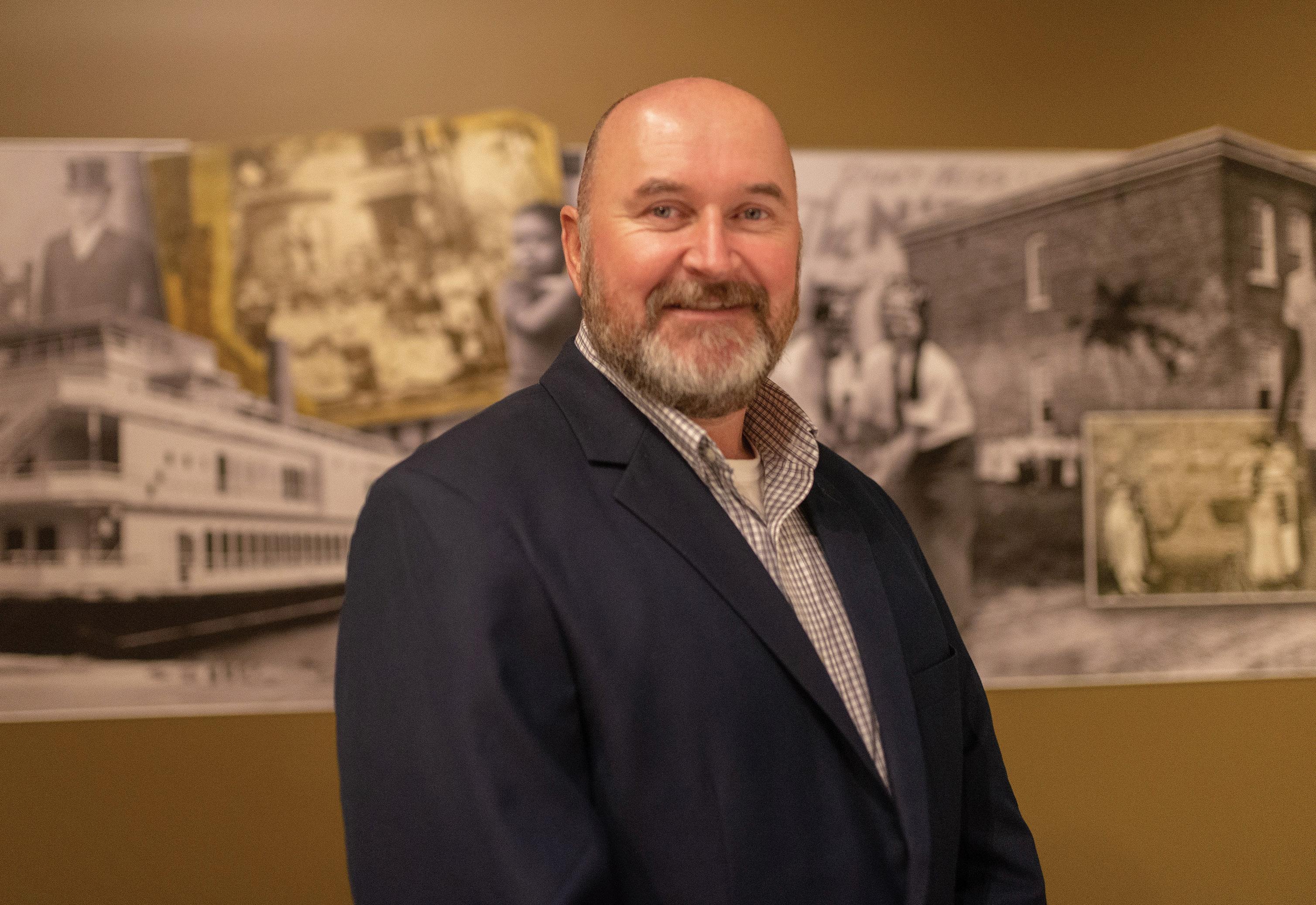

The Executive Director
I am Rob Overton, executive director of the UWF Historic Trust. Whether you are a Pensacola native, a new resident or a first-time visitor to our city, we are glad you picked up our publication to learn a little more about the place we call home. For visitors, we hope to share some captivating and engaging features about the history of our region so you can learn more about the city you will be exploring during your stay. If you are a resident, we trust this publication will serve as a valuable resource, enriching your understanding of the community you love with new information and interesting stories.
Since our founding, the UWF Historic Trust has been dedicated to collecting, preserving, interpreting and sharing the rich history of Northwest Florida, ensuring its legacy lives on through future generations. With this magazine, we hope you get a glimpse into the great things happening in our city today along with the impressive history of America’s First Settlement. Enjoy the magazine!
Rob Overton Executive Director of the UWF Historic Trust

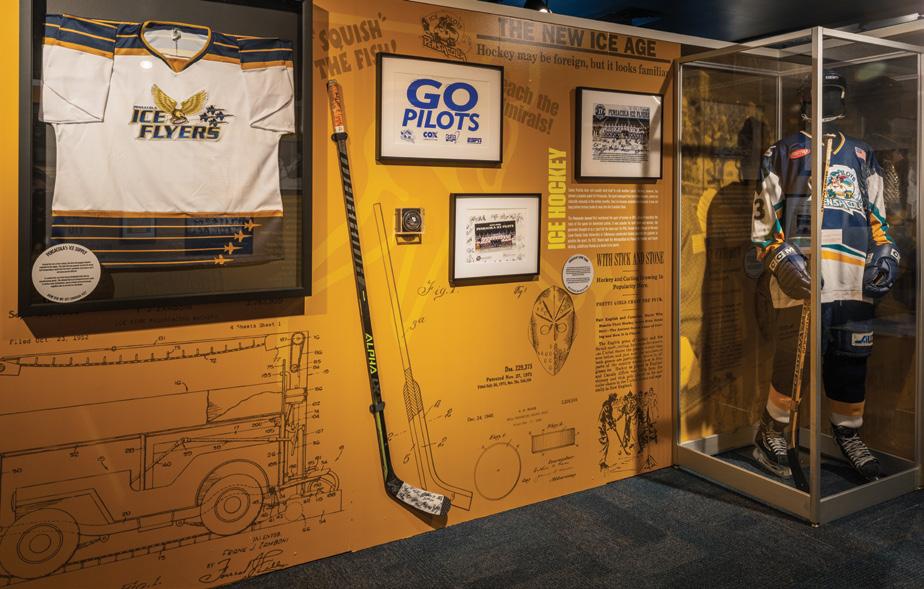
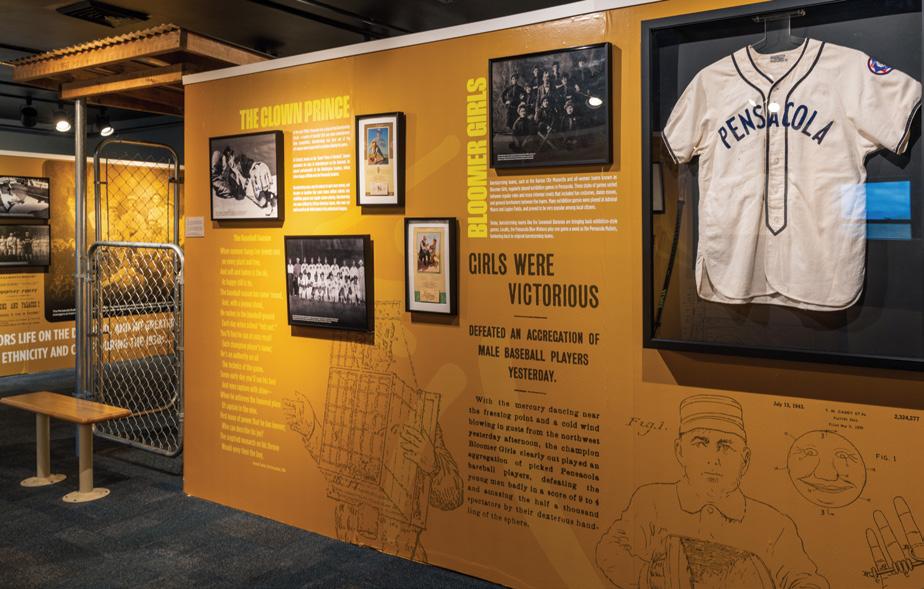
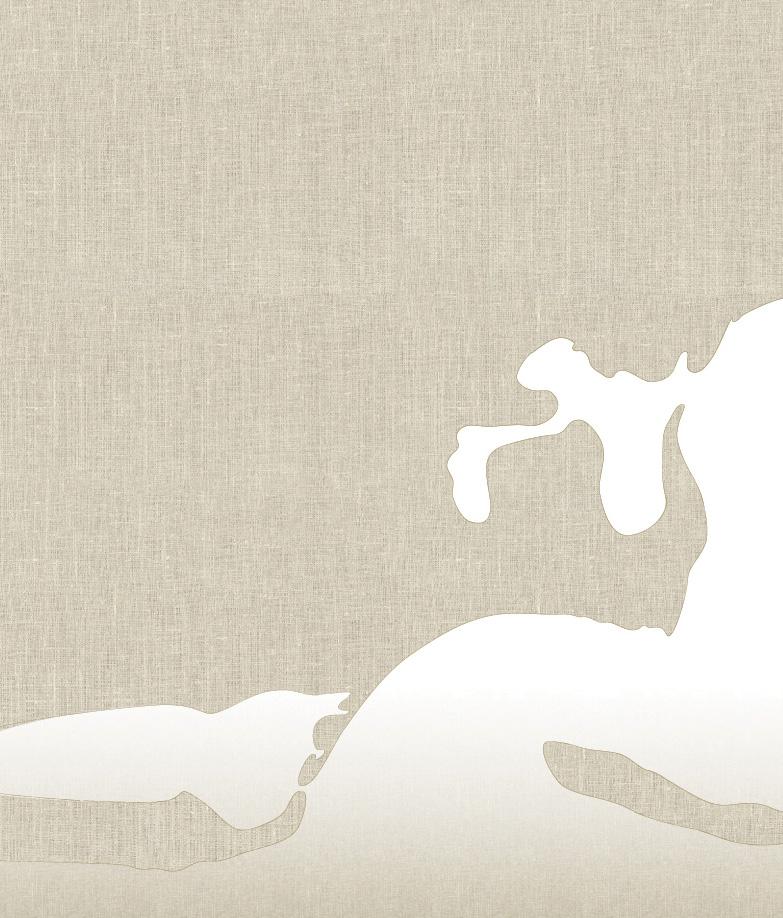
AT ONE TIME, the PMA was not so colorful inside. The venue first served as a courthouse and city jail in the early 1900s.
PENSACOLA MUSEUM OF HISTORY’S NEW EXHIBIT SHINES A LIGHT ON UNEXPECTED SPORTS
The Pensacola Museum of History has much to offer all sports lovers. Hat Trick! Pensacola’s Unexpected Sports, located on the newly renovated third floor of the museum, has an enormous gallery of sports exhibits ranging from ping pong to boxing. The new exhibit

WALLY MERCER Featuring
One of the most popular jazz bands to play in town were the Bourbon Street Six. Members included Frank Horne, Tony Viscuso, Norman Brownlee, Bud Wilkerson and Bob Tunney. They played everything from dance halls to benefit concerts. Frank Horne’s daughter, Joan Horne Jacobson, proudly preserved her father’s legacy for years and recently donated several of his personal items to the UWF Historic Trust – many of which are currently on display in the “Musically Inclined” exhibit.
Though jazz had its heyday in the early half of the 20th century, it is still a popular form of music. In 1982, Dr. Norm Vickers co-founded the Jazz Society of Pensacola, known as JSOP, to help preserve and revitalize the music genre. By 1983, the first JazzFest debuted in Seville Square, and it continues to this day with hundreds of people coming from all over to delight in the sounds of jazz.
Today, JSOP hosts regular musical review nights, and its members play all over the world. Vickers recognized the special place jazz holds in Pensacola, and its legacy lives on.

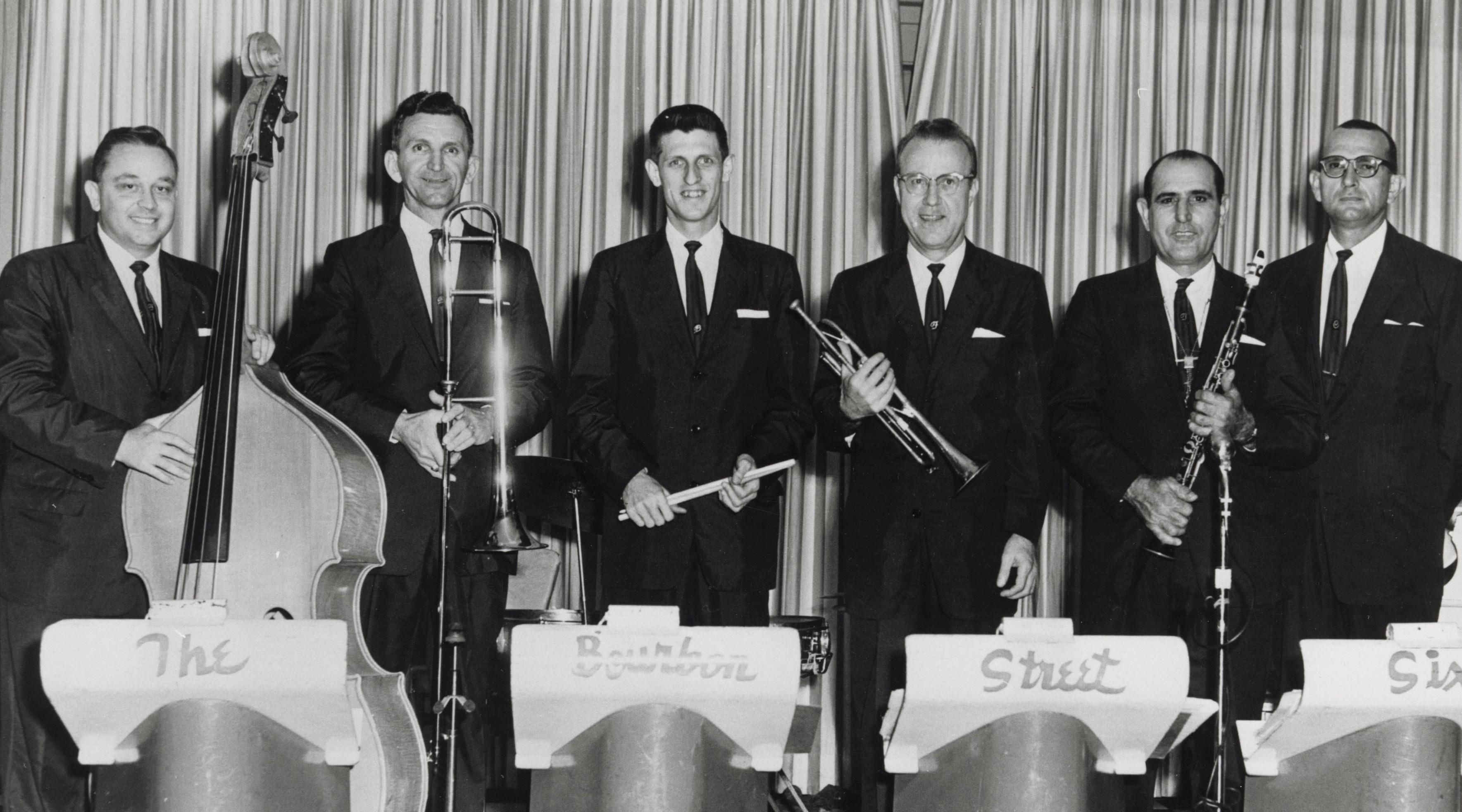
70 YEARS OF PMA
PENSACOLA MUSEUM OF ART CELEBRATES MORE THAN SEVEN DECADES OF RICH HISTORY AND ART EXPERIENCES
BY ALLISON MORGAN
or more than 70 years, the Pensacola Museum of Art has engaged and inspired others with thoughtfully collected, preserved and displayed works of art. At one time, the Spanish Revival Style building, located on South Jefferson Street in downtown Pensacola, was not so colorful inside. The venue first served as a courthouse and city jail in the early 1900s, until it sat vacant. In 1954, the local chapter of the American Association of University Women saw opportunity in the space. The members envisioned a community arts center for traveling art exhibitions, art classes and a place for meetings; they signed a lease for the building and began their art adventure as the Pensacola Art Association. Decades later, the association established the Pensacola Museum of Art and bought the building from the city. In 2016, as part of a gift agreement, the museum officially became a part of the University of West Florida Historic Trust.
“For seven decades, the PMA has offered exceptional art experiences,” said Nick Croghan, director of the Pensacola Museum of Art. “Last year, we had the opportunity to highlight the amazing people and art that have made the museum what it is today through our ‘Celebrate 70: A History of Collecting’ exhibition. One of our main goals with this showcase was to share as many of the unique treasures from the permanent collection of art as possible. Our role as stewards and educators is to protect and preserve these works, which date from the 19th century to present day, for the local community and future generations.”
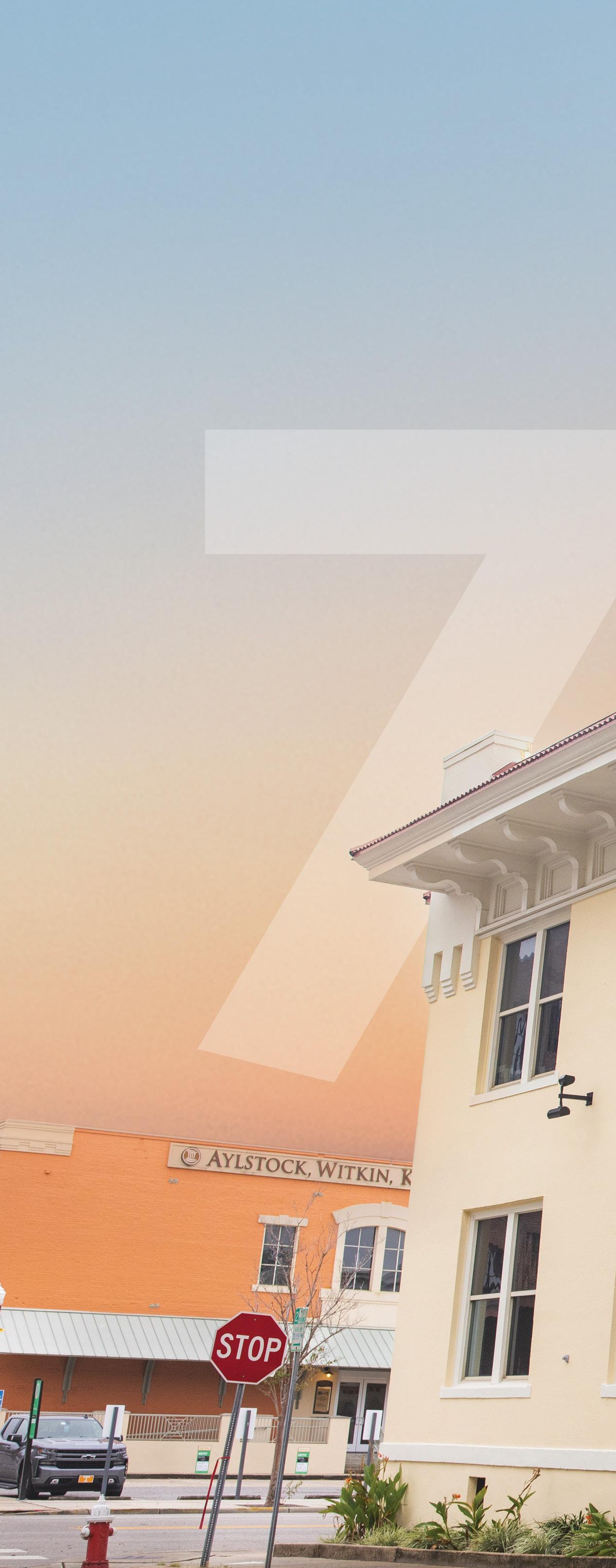

BELLE BEAR, an avid supporter of UWF and the Pensacola Museum of Art, gifted a work of art to the museum’s permanent collection.
As part of the “Celebrate 70: A History of Collecting” exhibition, the museum had more than 70 artworks on display, featuring seven different mediums from a multitude of styles and periods including Cubism, Realism, Pop Art, Abstraction, Folk Art and Illustration. The exhibition featured works by Francisco Goya, Henri de TouluseLautrec, Marc Chagall, Pablo Picasso, Andy Warhol, Salvador Dali, Henri Matisse and Norman Rockwell.
“This milestone gave us the platform to reflect on the partners, volunteers, donors and stakeholders who have all contributed to the success of the museum,” Croghan said. “We wanted to share how each artwork functions like a page in our story and articulate the ways in which the collection has grown through the generous support of so many people. An important mission of this permanent collection show was to emphasize that we are a cultural hub for Pensacola and remind the community of the rich experiences available in their own backyard.”
The museum’s first piece of art, called “Brooklyn Bridge,” acquired in 1955, was on display, alongside other modern and contemporary artworks from the museum’s

collection of over 700 pieces. In November, the PMA kicked off the Foo Foo Festival with a block party to celebrate the history of the museum. PMA staff also worked with the Foo Foo Festival committee on a more than 100 page catalogue featuring permanent collection pieces.
The 70th Anniversary Gala was the closing event to commemorate 70 years.
The gala gave those who attended it a behind the scenes tour of the museum and offered several surprises including the unveiling of a work of art donated by Belle Bear, an avid supporter of UWF and the Pensacola Museum of Art. The gift to the museum’s permanent collection, by Belle Bear in memory of her late husband Lewis Bear Jr., is titled “Costume for Titania from a Midsummer Night’s Dream,” by Miriam Schapiro. The colorful painting, completed in 1982 and done in acrylic and glitter, is the companion piece to Miriam Schapiro’s “Puck,” which is also in the museum’s collection.
“The Pensacola Museum of Art not only enriches the community of Pensacola, but also enriches the college experience for the students of the University of West Florida,” said Dr. David Earle, PMA board member and dean of the College of Arts, Social Sciences and Humanities. “Few other uni-
versities UWF’s size can boast of having an accredited museum where their students can engage closely with a wide range of art. More importantly, students can gain practical, hands-on experiences in art history, curatorial practices and art management through internships, volunteer opportunities and high-impact classroom practices.”
The museum also educates young, aspiring grade school artists. Throughout the year, the museum offers educational programs, seizing on the opportunity to inspire children with programs during the school year and in the summer. The museum hosts artist talks and lectures, museum tours and adult workshops year-round as well.
“The best part about the Pensacola Museum of Art is that we are always trying to keep things fresh with different types of exhibitions and a variety of exciting art,” Croghan said. “We take pride in making it a place where people can slow down for a moment and have the time to just dwell and enjoy visual culture.”
EXPLORE AMERICA’S FIRST SETTLEMENT
THROUGH THE A1S TRAIL
BY CLAIRE STEWART
While shopping, dining and exploring downtown Pensacola, many visitors pause to look at the large red line curving throughout the city center. This line, and the associated sites highlighted around the city center, tell the story of Pensacola over the last 464 years.
The red line is called the America’s First Settlement Trail and known as the A1S Trail. The A1S Trail is a three mile, selfguided walking tour through downtown Pensacola and the Pensacola Historic District that includes 20 significant historical stops and over 70 points of interest.
“This trail project was a labor of love for the Historic Trust, Visit Pensacola and the Fiesta of Five Flags Foundation,” said Rob Overton, UWF Historic Trust Executive Director. “Each of our organizations believes in the power of storytelling and the importance it plays in our shared history. Understanding the history of a place deepens the visitor experience, allowing them to connect with the city on a more profound level.”
In 1559, a Spanish expedition led by Tristán de Luna y Arellano brought 1,500 settlers in 11 ships from Veracruz, Mexico, to Pensacola to begin the Spanish colonization of the northern Gulf Coast. Shortly after Luna arrived, the colony was struck by a hurricane. The Luna settlement inhabited Pensacola from 1559 to 1561, which predates the Spanish settlement in St. Augustine, Florida, by six years, and the English settlement in Jamestown, Virginia, by 48 years.
Visitors can learn about each stop on the A1S trail by scanning the QR Code on the sidewalk medallion at each of the points of interest. While visitors can begin the trail at any point, the recommended first stop for the A1S Trail is Plaza Ferdinand VII. “We encourage everyone to lace up their shoes and embark on this journey of discovery through the A1S Trail,” Overton said. “It is not only educational but also a wonderful way to explore our city’s vibrant character.”

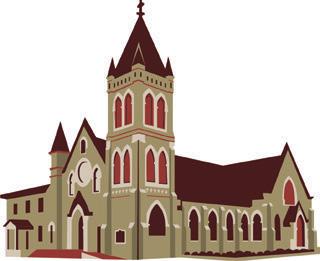


STUDIO
1559 Join us for Bootleg Ball 2026
The UWF Historic Trust is thrilled to host another Bootleg Ball gala in support of the Historic Trust and Pensacola Museum of Art. Our 2026 ball will be all about groovy glam. Join us in Studio 1559. We invite you to a dazzling evening of Studio 54-inspired revelry. You can expect groovy beats, disco balls, delectable hors d’oeuvres, signature cocktails and a party that lasts all night long (or at least until 10 p.m.).
Dust off your platform shoes and get ready to boogie down for a cause!
PECULIAR
PENSACOLA PIECES

ARTICLE BY CLAIRE STEWART.
Pensacola Museum of History boasts surprising stories behind some eye-opening collection pieces.
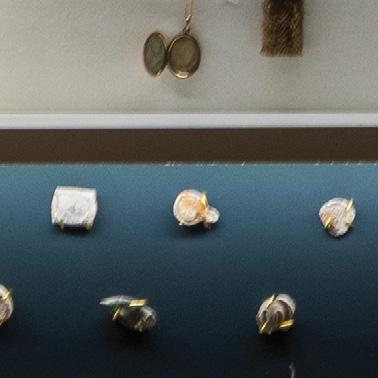
SEXHIBIT DOCUMENTATION BY JESSIE CRAGG.
ometimes even the smallest artifacts tell big stories. The massive collection of the UWF Historic Trust is made up of hundreds of thousands of individual objects. Our items range in size from our largest — a train engine — to the smallest of beads measuring no more than 4 cm long. Each item, no matter its size, reveals details of our lives through what we chose to keep, store and display.
Tiny artifacts, like a worn bus ticket or a faded newspaper clipping, can unlock vast narratives of our city’s past, revealing the daily lives and aspirations of those who came before us. Such ephemera, often overlooked, are crucial to understanding the social fabric and cultural shifts that shaped our community. A single, tattered receipt might illuminate a pivotal business relationship while a child’s toy can speak volumes about the evolving roles of families. These seemingly insignificant objects, when pieced together, form the rich tapestry of our shared history.
THE FOLLOWING ITEMS, FEATURED IN THE PENSACOLA MUSEUM OF HISTORY’S “ALL THE SMALL THINGS” EXHIBIT, MAY BE SMALL IN SIZE, BUT THEY REPRESENT INTEGRAL ITEMS TO OUR COMMUNITY’S HISTORY.

ADVERTISING JUG (CIRCA 1900s)
James C. Van Pelt, born in Alabama in 1864, lived his entire life in Escambia County, Florida. He operated a grocery store alongside his brother John, but he had loftier goals. In 1899, J.C. announced his campaign for Sheriff of Escambia County. He was elected in 1900 and went on to serve three terms over 14 years. It is possible this small jug contained alcohol and was provided to loyal customers of the grocery store as a thank you for their business. Drinkware was a popular form of advertising prior to prohibition.

LOCKET (CIRCA 1890s)
Carrying a loved one’s likeness helps keep their memory alive. The Victorians (1837-1901) were especially fond of keepsake lockets — even for people they did not know. The image inside this locket likely depicts a young Martha Washington. During the Victorian era, a small resurgence of Revolutionary heroes emerged, and Martha’s image became quite popular. Her portrait was on currency and postage stamps, as well as reproduced for personal use such as lockets.



MINIATURE BRICK (CIRCA 1930s)
The brick-making industry is a large contributor to the business landscape of Northwest Florida. Clay deposits along our banks led several businesses to set up shop here, manufacturing strong building materials for a global market. Even the U.S. government got involved, contracting local brick makers to supply enough brick to build several coastal fortifications. Originally a livery shop, the Taylor family pivoted to brick in the 1930s and established the Taylor Brick and Tile Company. They operated large beehive kilns, selling their bricks from their storefront in downtown Pensacola. These miniature versions were used as advertising mediums. Today, the company is known as W.R. Taylor & Co., a division of South Alabama Brick Co.
BRITISH MILITARY BUTTON (CIRCA 1770s)
Because major world powers have occupied Pensacola since its 1559 settlement, its history naturally falls into distinct periods. The Spanish, French, English and the United States all laid claim to this region in its past. During the English occupation, between 1763 and 1781, the bustling port town became home to dozens of war ships and several military regiments. This button once belonged on a British uniform. Its insignia indicates the wearer was part of the 52nd Regiment of Foot. While we will never know this soldier’s story, his impact on this area remains in the form of a single button uncovered from the sands of Pensacola Bay.
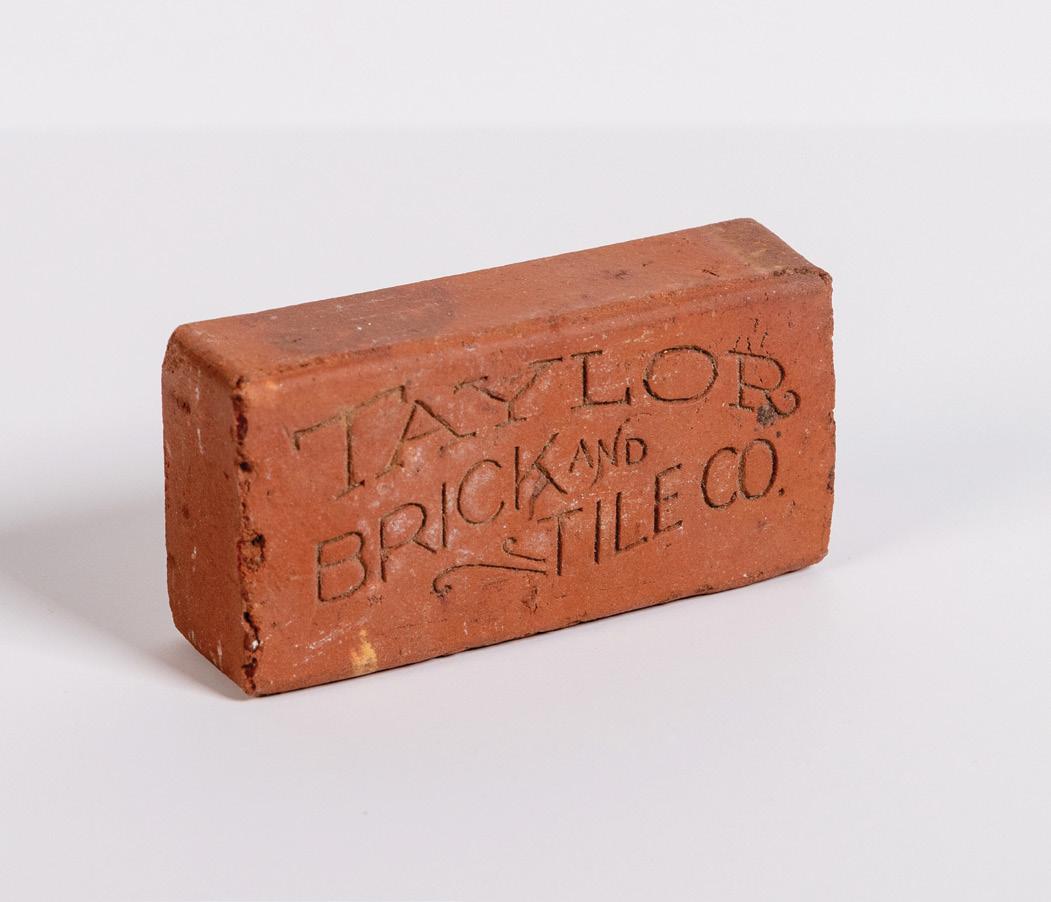


rel well and cold storage area. Stratigraphic soil stains beneath the British deposits suggested that earlier Spanish pits and structures might be present as well.
Stratigraphy is the study of soil layers that is used to determine the relative age of each layer. Over time, both natural and cultural processes create these soil layers. If cut into, the deposits resemble a layer cake, with the oldest at the bottom and the most recent on the top. Many factors can disturb the stratigraphy on a site and make it hard to determine the relative ages of the layers. Stratigraphy is one clue used by archaeologists to determine the relative age of an artifact or site. One of the interpretive panels now erected at the Commanding Officer’s

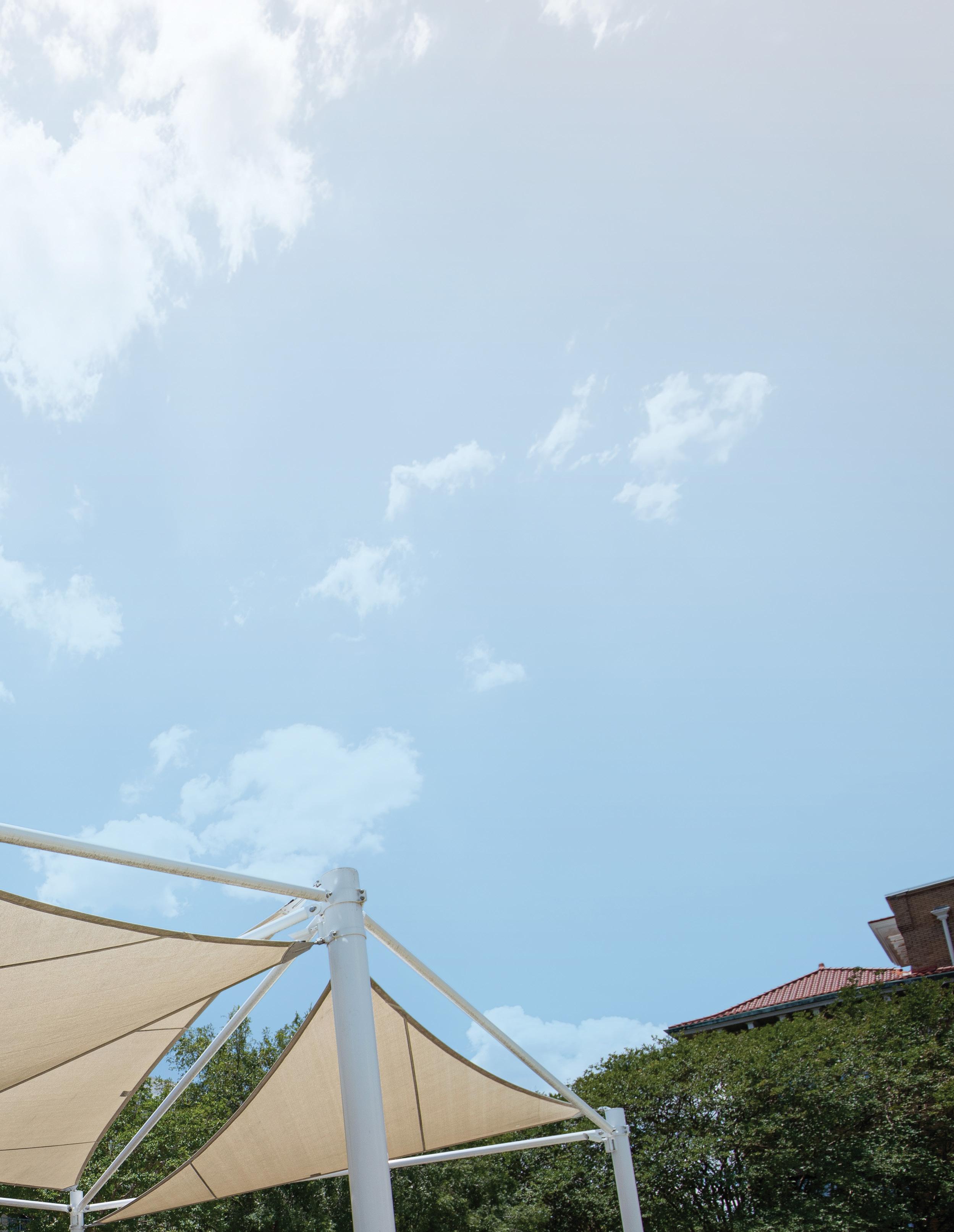
VISITORS CAN FIND the Commanding Officer’s Compound behind the Pensacola Museum of History in downtown Pensacola inside Museum Plaza.

Compound site depicts the four distinct layers of soil that were excavated under the compound in 2005.
The compound can be found behind the Pensacola Museum of History in downtown Pensacola and has been demarcated as an archaeological park and archaeological point of interest.
The modern-day Commanding Officer’s Compound sits inside Museum Plaza and is a central part of the Historic Pensacola site. With large shades, soft ground padding for visitors to walk comfortably, benches and interpretive panels about the archaeological site, the compound is inviting to visitors who want to sit and stay a while.
Visitors to the site can walk up to the blue barrier and take a look into the inground archaeological site to see the brick remains
of a bake oven and the foundations of an American Period Masonic Lodge.
One of the nearby panels outlines the complex use of this space over time. A color-coded map delineates the fort’s footprints during the First Spanish Period (1756-1763), British Period (1763-1781), Second Spanish Period (1781-1821) and the American Period (1821-Present).
Archaeological sites like this one, with its layers of Spanish, British and American history, offer a tangible connection to our city’s past, fostering a deeper understanding of its evolution. These sites serve as a microcosm of our city, reflecting the diverse cultures and historical forces that have shaped it over time. By exploring these remnants of the past, modern citizens can gain insights into the lives of those who came before us, appreciate the challenges they faced and recognize the lasting impact of their presence on our community.
The Blue Trees
The UWF Historic Trust, in partnership with Foo Foo Fest, hosted a series of events in November 2024 to celebrate the arrival of The Blue Trees: Environmental Installation on Museum Plaza in downtown Pensacola. The installation was created by Australian artist Konstantin Dimopoulos, who uses a proprietary pigment that is safe for all plants, animals and waterways, for his signature art installation that has been done in 37 cities around the world. In honor of the installation, the UWF Historic Trust hosted Community Installation Days, an Environmental Arts Market and a Blue Cheese & Blue Trees reception in the Museum of Commerce.





“I believe it is important for community members to give back by volunteering to support the amazing treasures in our community, like the Pensacola Museum of Art.”
— Cheryl Weir, president of the PMA Guild
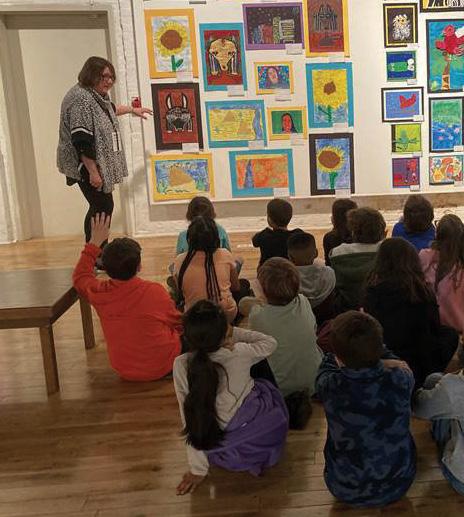

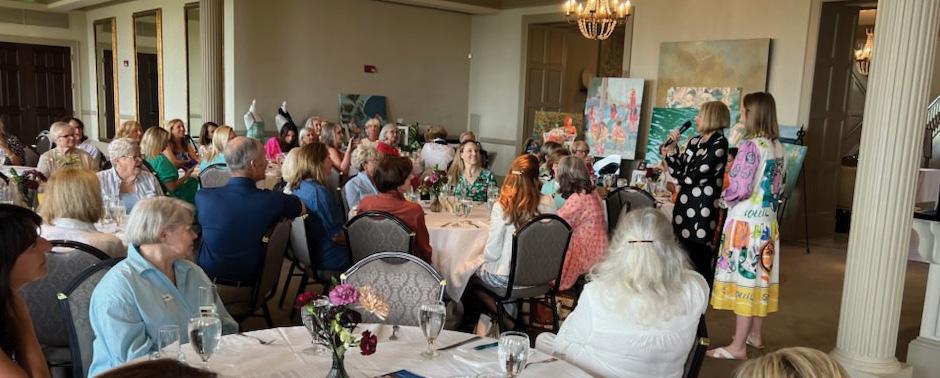

THE PMA GUILD supports the ongoing work of the Pensacola Museum of Art, providing valuable support for the museum’s events, tours and programs.
PENSACOLA MUSEUM OF ART GUILD
BY CLAIRE STEWART
In 1970, the Pensacola Museum of Art Guild was formed to support the ongoing work of the Pensacola Museum of Art and provide volunteers for the museum’s events, tours and programs. The group is passionate about bolstering their knowledge of the visual arts and enriching
the lives of others with this shared interest.
The Guild hosts monthly meetings in which local artists and speakers share information about their work, the artistic process or art history. In an effort to grow the local arts culture, the Guild provides valuable support for the PMA.
“One of our favorite events is volunteering for the annual ‘Youth Arts Focus’ exhibit,” said Cheryl Weir, president of the PMA Guild. “This exhibit features work from students across Escambia County. Our members enjoy leading school tours every morning during the exhibit so these students can see the work of their fellow students.”
The Guild donates $2,000 per year for arts education programming at the PMA. They also work to educate the community
about the offerings of the PMA and how to support this shared mission through membership. Today, the Guild has 55 members and continues to grow with community members committed to arts education in Pensacola.
“I believe it is important for community members to give back by volunteering to support the amazing treasures in our community, like the Pensacola Museum of Art,” Weir said.
To learn more about the PMA Guild or to join them at an upcoming meeting, call Cheryl Weir at 610.299.2360 or email at cheryl@cherylweir.com. General meetings are on the third Tuesday of each month beginning with a social at 10:30 a.m. and a program at 11 a.m.
